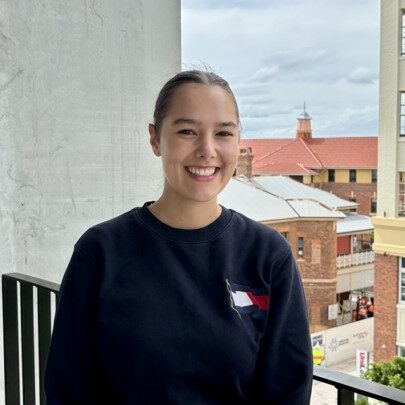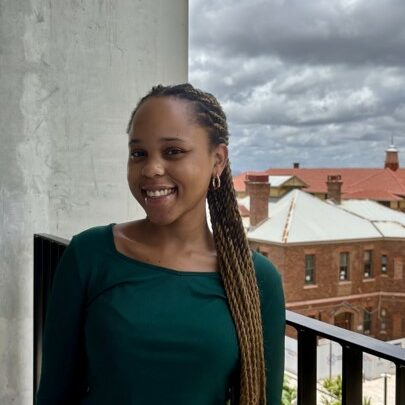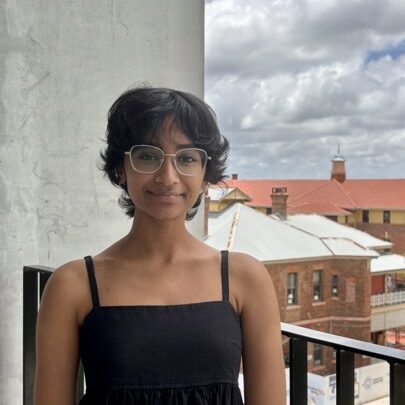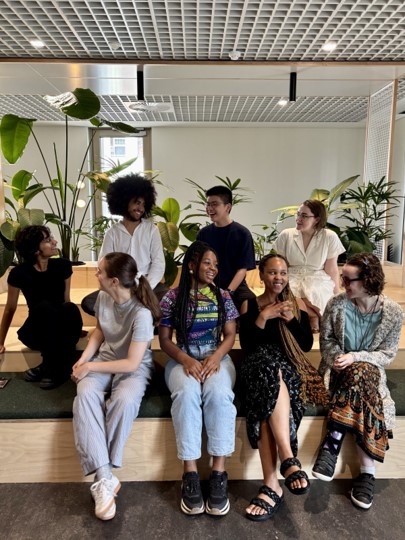Meet the students spending summer at AEHRC
The Vacation Studentship program brings together promising and high achieving students nearing the end of their degrees to give them the opportunity to learn alongside top researchers at Australia’s leading scientific organisation.
This year we offered 18 students a place within the AEHRC team.
Our vacation students will help contribute to pioneering digital health research across a range of disciplines.
Their projects include everything from medical image analysis to digital genome engineering, science communications, neuroimaging, and more.
Nina Hadzivukovic is a medical engineering and computational maths student at QUT joining the program for the second time.

Nina Hadzivukovic
Nina’s experience last year reassured her that she could use the skills she learnt in her engineering degree to pursue a fulfilling career she would enjoy.
This year Nina is continuing to work on cortical surface reconstruction with machine learning. The aim is to track pre-term babies’ brain development to predict their long-term outcomes and increase the chance of them receiving early treatment.
“I’m furthering the model from my honours thesis to include the entire brain and extending it to work for not just the regular baby brain but for babies that are born very very premature.”
Machine learning allows researchers to analyse scans of pre-term babies’ brains that are generally too blurry to interpret.
Ruvheneko Chatora is another vacation student working to further digital health solutions for premature babies.

Ruvheneko Chatora
Ruvheneko is using her knowledge of software engineering to develop a diagnostic tool that analyses the MRI scans of pre-term babies’ brains to identify early signs of conditions like cerebral palsy and ADHD associated with pre-term birth.
This allows babies and their carers to access important treatment and support early on, improving outcomes.
“With this image viewer we’re trying to use software to help us be able to detect these conditions early on,” Ruvheneko said.
Kaanchana Sekaran studies a Bachelor of Science majoring in neuroscience and computational mathematics at the University of Sydney.

Kaanchana Sekaran
Her vacation project investigates the relationship between perivascular spaces, tiny fluid-filled spaces surrounding blood vessels in the brain, and Alzheimer’s disease.
“My job is to analyse this large data set that we’ve already collected and prove why these spaces are really important in the context of Alzheimer’s disease. So, I’ll be looking at the relationship between perivascular spaces and sleep, or other factors and seeing if we can find anything surprising,” she explained.
Kaanchana’s work on Alzheimer’s disease hopes to help more people with Alzheimer’s be diagnosed and treated earlier before classic neurological symptoms of the disease appear.
Our vacation program allows students to get an idea of what a research career could entail and consider whether they would like to pursue further study.
Many of our students already have their sights set on obtaining PhDs or master’s degrees in their field of interest.
At the end of the program our students will have the opportunity to present their work to their peers and reflect on what they have learned.

Our vacation students are based at locations all around Australia, including our office in Herston (Brisbane).
The Australian e-Health Research Centre (AEHRC) is CSIRO's digital health research program and a joint venture between CSIRO and the Queensland Government. The AEHRC works with state and federal health agencies, clinical research groups and health businesses around Australia.
